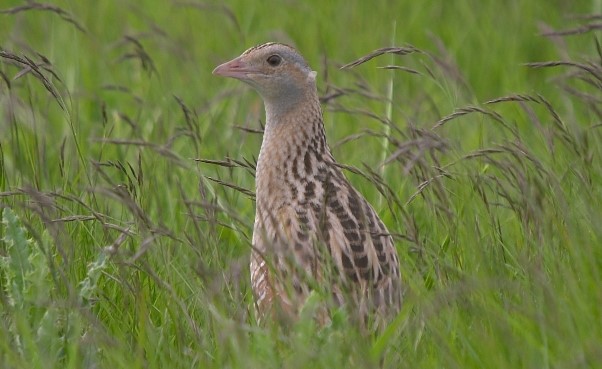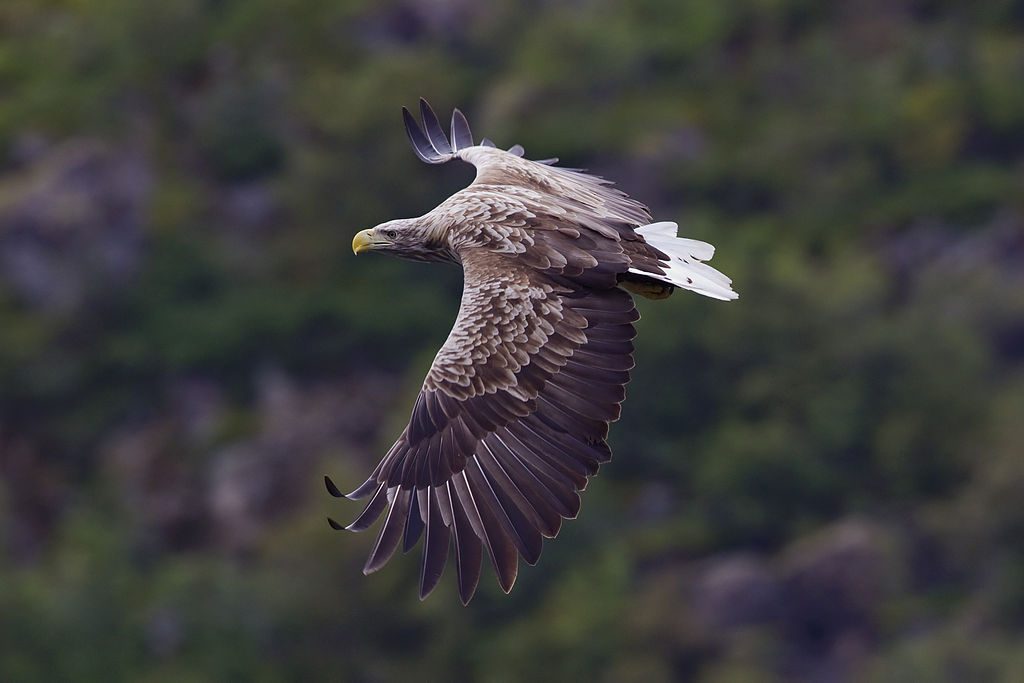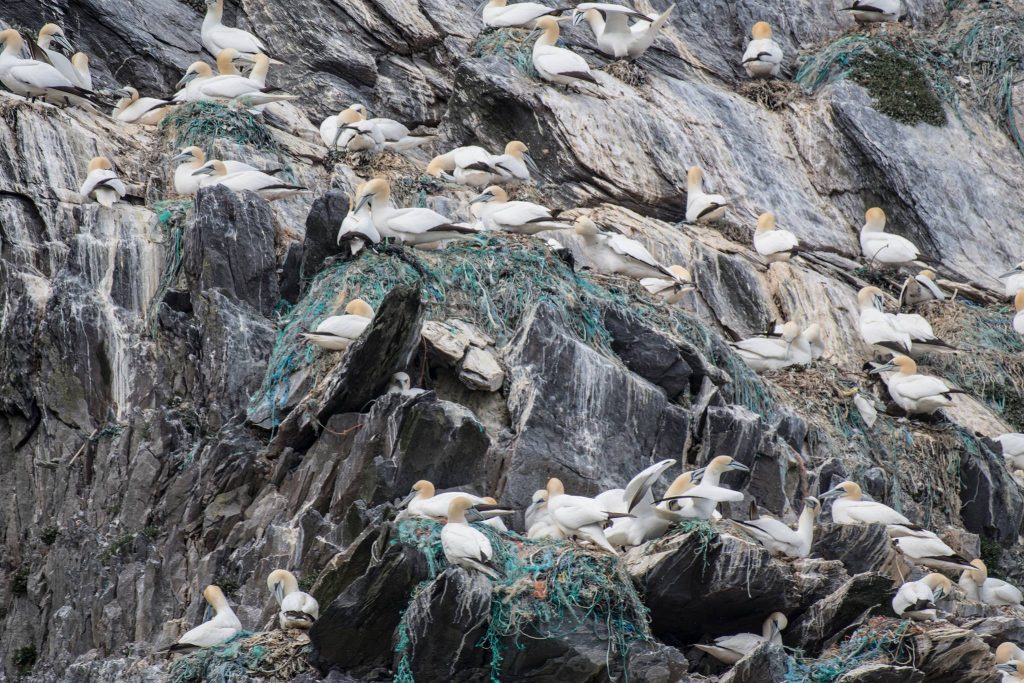Irish bird populations ‘decimated’ over space of few decades

July 2nd, 2019
The populations of a host of birds, including iconic species such as the Barn Owl and Curlew, have been “decimated” over the past few decades, BirdWatch Ireland has said.
Speaking before the Joint Oireachtas Committee on Heritage today, BWI’s assistant head of policy and advocacy Oonagh Duggan said that climate change, the intensification of the agricultural industry, habitat loss, and plastic pollution are all contributing to the decline in numerous terrestrial and sea birds.
Celebrating its 50th anniversary this year, Ms Duggan said that the conservation charity has seen “dramatic changes” to both Ireland’s landscape and biodiversity over the past half century.
Ms Duggan said that one in five of species that have been assessed on our island are now threatened with extinction, with “dramatic changes” particularly evident in bird populations.
While some bird species are quite adaptable to habitat change, she warned that many are seeing such a rapid loss of their habitats that they “cannot cope with the change, and their populations have been decimated”.

Waterbirds
For example, Ms Duggan said, Ireland has lost around 40 per cent of waterbirds – close to half a million birds – that migrate to Ireland in less than 20 years. This includes a decline in over half of the 15 wader species that winter here, such as Lapwing that is down 67 per cent.
The well-known Mallard Duck has also declined by over 40 per cent in the last 20 years, she added, with the Tufted Duck, Goldeneye and Pochard all down between 30 and 80 per cent.
“Habitat loss, climate change, and cumulative impacts represent the biggest pressures and threats on our wintering waterbirds and urgent action is needed to protect areas important for them and to maintain this diversity of species,” Ms Duggan said.
Farmland birds are not faring any better, she said, with the BWI-led Countryside Bird Survey, running since the 1990s, revealing that about a quarter of familiar farmland birds such as Swift, Greenfinch, Stonechat, and Kestrel are “exhibiting serious declines”.

Farmland populations in freefall
The intensification of agricultural practises, plantation forestry and widespread drainage of wetlands have made our once “biodiversity-rich farmland landscape” less and less hospitable for biodiversity, Ms Duggan said.
This is reflected in the “almost complete extermination” of farmland birds such as the Corncrake, she added. Once commonly recognised by its distinctive rasping call, the corncrake has experienced a significant drop in population this century, putting the species at risk of global extinction.
The recently released Corncrake Project Annual Report 2018 from the National Parks and Wildlife Service (NPWS) indicates that 151 calling males were identified during the 2018 breeding season. Although this is an increase of eight per cent from 2017, the population declined over the previous three years from 230 recorded in 2014.
In addition, Ms Duggan said, 11 of the 12 wader species nesting in Ireland “once widespread and familiar to many farmers”, including the ironic Curlew, Lapwing and Snipe, are in serious decline.
The Curlew – Ireland’s largest wader – is one of Ireland’s most threatened species. It is on an international red-list as the population has seen a 98 per cent decline since the 1980s. Today, it is estimated that only 128 breeding pairs remain in Ireland, compared to 5,000 pairs in the 1960s and 1970s.
“Once, not long ago, the famed cry of the Curlew was literally the sound of wild Ireland, but most of its former strongholds have now fallen silent,” Ms Duggan decied.
Major changes to agri-policy are required to halt biodiversity decline, she said, including rewarding farmers in high nature value areas for protecting their land, as well as diversification of agriculture to ensure viable farm livelihoods alongside “thriving biodiversity”.

Raptors and urban birds
One conservation success story in recent years, Ms Duggan said, is the reintroduction of several raptor species such as the Golden Eagle, White-tailed Eagle and Red Kite. Another apex predator, the Buzzard, is “once again a familiar sight across much of the country”, she said, with the Peregrine Falcon has slowly started to recover after decade-long declines.
Ms Duggan warned, however, that the likes of shooting, indiscriminate poisoning, and loss of habitat that led to the decline of raptors in the first place are “unfortunately still present in the Irish countryside”. As such, many raptors are still in trouble, she added, with the Barn Owl red-listed for conservation concern and the Hen Harrier and Merlin under pressure.
Last August, the first Sea Eagle fledged in Cork for 100 years was found dead on Dingle Peninsula, with an investigation also started that month in relation to the unlawful killing of two peregrine falcons in Co Louth.
“Greater emphasis on investigation and enforcement of the legislation is required, including better resourcing of the National Parks and Wildlife Service and greater collaboration with An Garda Siochána,” Ms Duggan said.
Urban birds are also under pressure such as the Swift that has seen a 50 per cent decline over the past 20 years largely due to the loss of nesting sites in older buildings and the impact of climate change on insects that Swifts rely on as their sole food source, Ms Duggan said.
She added that mandatory Swift bricks for nesting on all new public buildings would “would go a long way towards halting the rapid local extinctions we are seeing across the country”.

Seabirds under climate and plastic pressure
Seabirds like the globally threatened Puffin and Kittiwake are also experiencing declining populations in Ireland, with climate change outlined as “probably the most serious threat to seabirds”, Ms Duggan stressed.
Rising temperatures in the oceans are impacting fish populations, leaving birds to travel further distances to seek out a meal, she said, while rising sea levels and increasing summer storms are also having an impact.
Plastic pollution from discarded waste and fishing equipment are also harming numerous species, Ms Duggan said, with ingested plastics affecting the likes of Fulmars, and Kittiwake. Gannets also suffer fatal entanglement in discarded fishing gear, plastic debris, and other marine contaminants, she said.
Concerns were recently raised over the level of plastic waste covering Little Skellig off the coast of Co Kerry that the 35,000 pairs of Gannets that breed there annually are using as nesting material.
One positive for seabirds, Ms Duggan said, was the success of BWI’s conservation project for the Roseate Terns on Rockabill island off Skerries that has seen the species’ population jump from 152 to 1,597 breeding pairs over the last 30 years.
Conservation actions at the Tern colony include the removal of vegetation, provision of nesting boxes, and protection from predation and disturbance. “This has been a profoundly successful project and shows what can be achieved with the input of resources,” Ms Duggan said.
“Now is the time to bolster this funding to ensure that we can continue to avail of the ecosystem services that nature provides,” Ms Duggan said.
[x_author title=”About the Author”]







